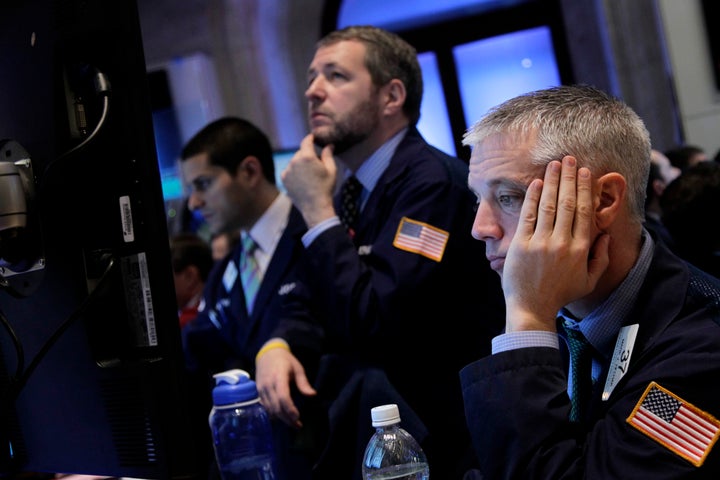
Trying to draw a definitive conclusion about the direction of the economy is becoming increasingly difficult. The incoming economic data is ambiguous at best, which may provide justification for the Fed to continue its aggressive support for the recovery. Of particular concern to investors trying to read the tea leaves may be the bond market itself. Treasury yields continue to hover at near-record lows, with yields on the 5-year and 10-year bonds currently at just 0.83 percent and 1.92 percent, respectively. Typically, bond prices rise (and yields fall) when investors are worried about future economic growth. U.S. Treasuries are the safe refuge during periods of uncertainty. Is the Treasury market trying to tell us something?
But it's not just "risk-free" bonds that investors are gobbling up with unprecedented voracity. Demand has surged for bonds of all stripes as yield-hungry investors seek a slightly higher return on their investment. We looked at some of the current yields available on high-quality corporate debt, and what we found was not particularly encouraging. Would you tie up your money for three years to buy a PepsiCo bond that yields just 0.68 percent annually? How about for four years to buy a Verizon bond that yields 1.27 percent annually? These yields do not even cover the Fed's expected rate of inflation of 1.6 percent to 2.0 percent over that time frame. Does this mean that the Fed's view on inflation is wrong and that inflation will actually be much lower than the Fed expects, or does it mean that investors have simply become too enamored with bonds after a decade of bonds outperforming stocks? Unfortunately, no one knows the answers to these questions.
Investors appear to be falling in love with lower-quality bonds again, as well. There was an article in Monday's Wall Street Journal entitled "There's Plenty of Money for Junk." The article describes how money has started pouring into riskier fixed-income investments in recent weeks, reminiscent of the days before the financial crisis. Demand for yield is so great that investors are again beginning to fund leveraged buyouts, collateralized-loan obligations, and "covenant-lite" loans. Risk tolerance among investors is clearly increasing. Is this a sign of an improving economy or simply desperate greed for higher yields? We don't have the answer for you.
We do know that we do not believe in "stretching for yield" when buying bonds. The bond portion of a client's portfolio is designed to reduce the overall volatility of her portfolio. It is designed to offer stability, protection and income. However, we will always sacrifice potentially higher income for extra safety. We continue to do our very best to build client bond portfolios that protect principal and offer as much as yield as possible without taking on too much risk. We are keeping bond portfolio maturities fairly short and maintaining our high quality standards.
There are, of course, other factors that are causing such high demand for bonds right now. The most obvious is the Fed's commitment to keep interest rates low for the indefinite future. With this commitment in place, investors believe they can safely buy bonds without having to worry about an imminent surge in interest rates (which would negatively affect the value of their bonds). The second factor is the situation in Europe. As long as there is no long-term resolution to the debt crisis in Europe, demand for U.S. securities will remain strong as investors continue to seek safety. These two factors are undoubtedly ensuring strong support for the bond market right now.
Investors have voted with their money, and they clearly favor bonds right now. The bond market is viewed as much safer, thanks largely to the Fed's continued support. But for our part, we continue to believe that investors are underestimating the risks inherent to the bond market at this stage in the game. Bond investors are not being compensated for the risks they are assuming when they are not even able to earn the expected rate of inflation. High-quality U.S. stocks on the other hand, offer some protection against inflation, the possibility of growth, and, in many cases, the dividend yields above Treasuries. We think the choice is pretty clear.
As for the other economic tea leaves, we see conflicting data within a number of the key economic indicators:
•Housing -- Housing prices seem to be stabilizing, but the stabilization has been highly dependent on super-low mortgage rates. We continue to see no V-shaped recovery as foreclosure inventories remain high and credit remains tight. In addition, a spike in interest rates could significantly hamper demand and lead to a resumption in price declines.
•Manufacturing -- Although manufacturing had led us out of the doldrums late last year, activity has cooled in recent months. However, this week's ISM Manufacturing Index was actually stronger than expected (54.8 versus 53.0 consensus estimate), adding ambiguity to the story.
•Employment -- Weekly jobless claims have crept up in recent weeks. Combined with last month's government employment report (+120K non-farm payrolls versus +205K consensus estimate) and this month's ADP report (+119K versus +170K consensus estimate), it is hard to determine whether or not job growth is actually accelerating.
•Consumer Incomes and Spending -- Perhaps most encouragingly, personal consumption rose 2.9 percent in the first quarter of 2012 (according to the advance GDP report issued last week). However, there are a couple of concerns. First, abnormally warm weather undoubtedly contributed to the spending strength in the first quarter. Therefore, some spending that would have occurred in the second quarter may have been pulled into the first quarter. Secondly, the savings rate dipped back down again to 3.9 percent from 4.7 percent for full-year 2011. Given our assumption that the consumer needs to save at a higher rate, spending growth may moderate over the balance of the year unless income growth accelerates.
In summary, it appears we remain mired in a lackluster recovery. Given current trends and continued monetary and fiscal support, we would expect growth of 2.0 percent to 2.5 percent for the full year. We would emphasize, however, that even this modest level of growth (following such a severe recession) is highly dependent on fiscal and monetary support, both of which may fall dramatically by this time next year. While we believe the worst is behind us, we expect the road ahead will be less than smooth and straight. Don't despair. We are moving in the right direction. Please let us know if we can help you.
Peace,
Michael
